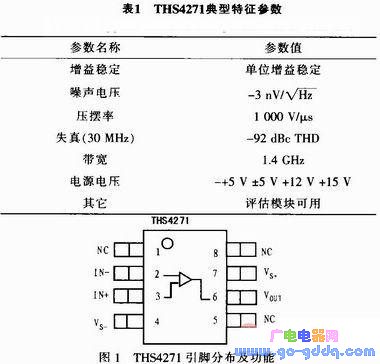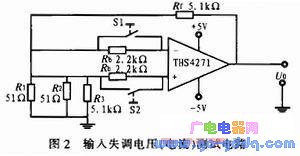This paper presents a practical experimental setup based on the TI THS4271 integrated operational amplifier. The experiment focuses on measuring key parameters such as input offset voltage (UIO), input offset current (IIO), common-mode rejection ratio (CMRR), and open-loop differential gain (AUd). These measurements were conducted under controlled conditions to ensure accuracy and reliability. The data collected was then analyzed to evaluate the performance of the THS4271 in real-world applications.
Despite significant advancements in integrated circuit technology, operational amplifiers remain essential components in modern electronic systems. Their performance is critical in various engineering fields, especially where high precision and stability are required. This study explores the THS4271's characteristics, including its low noise, high slew rate, and unity-gain stability, and demonstrates how these features make it suitable for a wide range of applications. By analyzing the measured data, this paper aims to provide valuable insights for future users and researchers who may consider using this amplifier in their projects.
1. Chip Introduction
The THS4271 is a high-performance voltage feedback operational amplifier designed by Texas Instruments. It operates within a supply voltage range of 5V to 15V and offers excellent specifications such as low noise, high slew rate, wide bandwidth, and low distortion. Its unity-gain stability ensures reliable operation across a broad frequency range, making it ideal for applications that require a high dynamic range. The THS4271 is available in multiple package options, including SOIC, MSOP with PowerPAD, and leadless MSOP. Typical performance parameters are listed in Table 1.

The physical layout and pin configuration of the THS4271 are illustrated in Figure 1. Each pin serves a specific function, with some pins marked as "NC" (no connection).
2. Experimental Principle
2.1 Input Offset Voltage
In an ideal operational amplifier, when the input signal is zero, the output should also be zero. However, due to internal asymmetry in the op-amp’s transistors, the output may not be exactly zero. This deviation is known as the input offset voltage (UIO). To compensate for this, a small DC voltage is applied to the input to bring the output back to zero. A smaller UIO indicates better internal symmetry and improved performance.
2.2 Input Offset Current
The input bias current refers to the difference between the base currents of the input transistors in the op-amp. Due to manufacturing variations, these currents are not perfectly equal. The difference, called the input offset current (IIO), can cause an output voltage shift, especially when dealing with high-impedance signal sources. Minimizing IIO is crucial for maintaining accurate signal processing.
2.3 Common-Mode Rejection Ratio
The common-mode rejection ratio (CMRR) measures an op-amp’s ability to reject unwanted common-mode signals. It is defined as the ratio of the differential gain (Ad) to the common-mode gain (Ac), expressed in decibels: CMRR = 20 log(Ad / Ac). A higher CMRR means better immunity to common-mode interference, which is vital in noisy environments.
2.4 Open-Loop Differential Gain
The open-loop differential gain (AUd) represents the amplifier’s gain without any external feedback. It is calculated as the ratio of the output voltage (UO) to the differential input voltage (Uid): AUd = UO / Uid. This parameter is important for understanding the amplifier’s basic behavior and its suitability for different applications.
3. Test Circuit, Data, and Analysis
3.1 Measurement of Input Offset Voltage
The test circuit for measuring the input offset voltage is shown in Figure 2. By closing switches S1 and S2 and shorting resistor Ra, the output voltage (UO) is measured. This value is then converted to the input offset voltage using the formula UIO = R1 × UO / (R1 + Rf). In this experiment, UO was measured as 385 mV, resulting in an input offset voltage of 3.85 mV.

Battery Charger,ebike battery charger,ebike charger,water purifier charger
FOSHAN SHUNDE KELICHENG POWER SUPPLY TECHNOLOGY CO., LTD , https://www.kelicpower.com